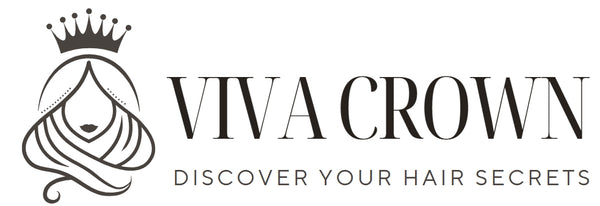
How to Make a Hair Topper?
Share
Content Menu
● Essential Materials and Tools
>> High-Quality Hair Selection
>> Base Design and Construction
>> 1. Measuring and Template Creation
>> 3. Preparing and Processing Hair
>> 4. Bundling and Wefting Hair
>> 5. Attaching Wefts to the Base
>> 6. Creating a Realistic Parting and Hairline
>> 7. Clip Installation for Security
>> 8. Layering and Texturizing
>> 9. Customizing Color and Density
>> 10. Final Blending, Styling, and Quality Assessment
>> 11. Fitting and Daily Application
● Insider Tips for Lifelong Topper Success
● Frequently Asked Questions (FAQ)
>> 1. How can I select a natural-looking hair topper?
>> 2. Can I style my hair topper with heat tools?
>> 3. How do I blend a topper with fine or thin hair?
>> 4. How long will a well-made hair topper last?
>> 5. What tips help maintain topper softness and durability?
Creating a hair topper is both a meticulous craft and an empowering process for those dealing with thinning hair or hair loss. By blending VIVACROWN's artisanal methodology with accessible pricing, anyone can achieve the look of luxury with a high-quality, handmade hair topper. This tutorial explains every aspect of hair topper creation, including technical tips, industry secrets, blending advice, and practical care recommendations.[3][8]

Understanding Hair Toppers
Hair toppers are carefully designed hairpieces made to supplement natural hair at the crown, seamlessly camouflaging thinning or balding areas. Unlike wigs, toppers are lightweight, secure, and blend naturally with your existing hair, whether you need added volume, length, or coverage.[9][11]
Essential Materials and Tools
High-Quality Hair Selection
Choose Remy human hair for unparalleled realism, durability, and softness. Careful selection of color, texture, and density ensures the topper integrates perfectly with the wearer's own hair. For specialized needs, European hair is sometimes handpicked and manually blended to achieve a perfect match due to its delicate structure.[7][10][11]
Base Design and Construction
Bases can be made of silk, lace, monofilament, or polyurethane. Silk and mono bases are favored for natural scalp-like appearance and versatile parting options, while lace provides excellent breathability. The size and shape of the base depend on the client's crown and required coverage.[11][12]
Additional Essential Tools
- Mannequin head
- T-pins
- Micro crochet needle or sewing needle
- Thread matching the hair color
- Snap clips or combs
- Hair care products
- Scissors and root concealer
The Manufacturing Process
1. Measuring and Template Creation
Begin by measuring the area needing coverage from front-to-back and side-to-side. Draft a template reflecting these dimensions, which will guide base shaping and ensure comfort.[4]
2. Base Production
Cut your chosen base material according to the template and secure it on a mannequin head. Bases may have varied construction—lace for breathability, silk for realism, or PU for adhesive-based application.[2][3][4]
3. Preparing and Processing Hair
Human hair for toppers typically undergoes cleaning, acid treatment, and color matching. Remy hair is processed to dissolve cuticles, dyed to desired shades, permed or treated for texture, and conditioned for strength and shine. European hair, being finer, is often blended by hand for natural multi-tonality.[10][7]
4. Bundling and Wefting Hair
Arrange hair into wefts or bundles, considering direction and density to mimic natural growth. Leave some irregularity in direction, especially around the edges, for lifelike integration and movement.
5. Attaching Wefts to the Base
Attach base to the mannequin with T-pins. Beginners should use the perimeter approach, sewing hair wefts or bundles from outside in toward the parting area, with careful U-shaped placements for organic flow and bounce. Knotting or ventilation (hand-tying) is critical for realism and durability, with various methods customized by manufacturers.[2][3][4]
6. Creating a Realistic Parting and Hairline
Use finely knotted hair at the parting to imitate the natural scalp. Carefully pluck or tweeze to customize the part width and add scalp makeup for authenticity. A seamless hairline is essential; irregular partings and baby-hair details further enhance undetectability.[8][13]
7. Clip Installation for Security
Sew pressure-sensitive clips at anchor points along the base edges for secure attachment. Proper clip placement ensures the topper remains comfortable, unnoticeable, and easy to remove or adjust.[12][3]

8. Layering and Texturizing
To achieve realistic movement, trim and layer the topper using precision scissors. Layering adds dynamism and allows you to blend the topper with your own hair for a completely natural appearance. Use a fine-tooth comb to section hair evenly, and layer at an angle, moving from front to crown. Blending shears soften transitions between sections for a salon-like finish.[6]
9. Customizing Color and Density
Mix multiple colors, highlights, and lowlights into the topper for a natural result. Avoid excessive density; mimic the actual thickness and lay of real hair.[10][11]
10. Final Blending, Styling, and Quality Assessment
Before wearing, style your topper and biological hair separately. Lightly tease the roots and use texture spray or dry shampoo to add hold and reduce shine. Blending at the root and along the part line is essential for a seamless appearance.[14][15]
11. Fitting and Daily Application
Align the topper with your own part, insert clips, and gently style so bio hair and topper merge. Comfort and seamless integration are top priorities.
12. Ongoing Maintenance
Wash with sulfate-free shampoo and condition only the ends. Allow to air-dry for longevity; avoid frequent styling with heat unless hair is 100% human Remy. Proper care extends the lifespan, keeping the piece soft and shiny for months.[16][11]
Insider Tips for Lifelong Topper Success
Selecting Base Material
Pick a base suited to your scalp sensitivity and wearing habits. Silk and mono offer realistic appearance; lace is ideal for long wear without irritation.[11]
Knotting Methods
Expert knotting—single, double, or split knots—determines volume, durability, and realism. Double knots provide longevity for high-wear areas while single knots achieve a more natural look at the hairline.[7][10]
Achieving the Perfect Fit
Custom templates and trimmed bases ensure every topper fits snugly and invisibly. Periodically check fit as your hair changes, adjusting clips or base shape as needed.
Creating Depth
Integrated lowlights, highlights, and balayage-style coloring impart multidimensional depth, replicating the vibrant diversity of real hair.[10][11]
Comfortable All-Day Wear
Use lightweight bases and soft clips for maximum comfort. Regular cleansing removes buildup and maintains breathability, crucial for sensitive scalps.
Conclusion
Handcrafting a hair topper is a transformative journey, combining skilled artistry, careful technique, and a deep understanding of hair structure. VIVACROWN brings luxury within reach by merging the finest real hair and meticulous craftsmanship at an accessible price point. Whether you're new to hair toppers or an experienced wearer, a customized, well-blended hair topper offers both confidence and elegance. To explore bespoke luxury toppers or get expert recommendations, reach out to VIVACROWN—where dedication and expertise redefine premium hair solutions for everyone.

Frequently Asked Questions (FAQ)
1. How can I select a natural-looking hair topper?
Opt for a mono or silk base with individually knotted Remy hair that matches your own color, texture, and density. Multi-tonal pieces add natural dimension, while handcrafted details ensure seamless blending.[13][11][10]
2. Can I style my hair topper with heat tools?
Human hair toppers withstand heat styling; synthetic varieties require heat-friendly ratings. Always check manufacturer guidelines before using curling irons or straighteners.[14][11]
3. How do I blend a topper with fine or thin hair?
Use gentle teasing at the root, select a lightweight, low-density topper, and blend with texture spray or concealer for optimal integration.[12][14]
4. How long will a well-made hair topper last?
Human hair toppers typically last one to two years with proper care, while synthetic toppers last several months. Regular gentle washing and minimal heat exposure extend their lifespan.[16]
5. What tips help maintain topper softness and durability?
Wash infrequently with sulfate-free shampoo, condition only ends, and store topper on a mannequin when not worn. Avoid excessive heat and chemicals for long-lasting shine and strength.[11][16]
Citations:
[1](https://www.danielalain.com/blogs/articles/ultimate-guide-hair-toppers)
[2](https://cooviphair.com/blogs/blog/how-to-make-a-hair-topper-a-step-by-step-guide-to-creating-your-own)
[3](https://emedahair.com/how-to-make-a-hair-topper/)
[4](https://www.youtube.com/watch?v=rFXvOIphG1I)
[5](https://www.youtube.com/watch?v=FJrpvraSW5Y)
[6](https://www.bonohair.com/blog/a-complete-step-by-step-guide-how-to-cut-layers-in-a-wig-topper/)
[7](https://www.superhairpieces.com/blog/hairpiece-and-wig-production-everything-you-need-to-know/)
[8](https://www.wigshe.com/blog/hair-care/the-most-comprehensive-guide-for-hair-toppers-101.html)
[9](https://www.dimpleshair.com/a/blog/hair-toppers-guide-for-beginners)
[10](https://lookoflove.com/2024/07/03/human-hair-toppers-a-comprehensive-guide-to-materials-construction-and-integration-techniques/)
[11](https://thelaurenashtyncollection.com/blogs/blog/do-hair-toppers-look-natural-how-to-make-yours-undetectable)
[12](https://alchemane.com/blogs/articles/7-secrets-to-natural-looking-hair-with-toppers-that-women-swear-by)
[13](https://www.danielalain.com/blogs/articles/how-to-make-a-hair-topper-look-natural)
[14](https://www.hairtoppers.com/blogs/news/how-to-make-a-hair-topper-look-natural)
[15](https://www.youtube.com/watch?v=n6H4AaWAyrM)
[16](https://www.facebook.com/sunnyhairextension/videos/-the-secret-to-making-your-hair-topper-last-longer-proper-care-/3695635800568267/)
Hot tags: How To Make A Hair Topper Step By Step, DIY Hair Topper Tutorial, Handmade Hairpiece Guide, Create Natural Looking Topper, Sewing Hair Topper Base, Making Silk Base Topper, How To Attach Hair To Topper, Crafting Human Hair Wig Topper, Custom Wig Construction Tips, Building A Lace Hair Topper
